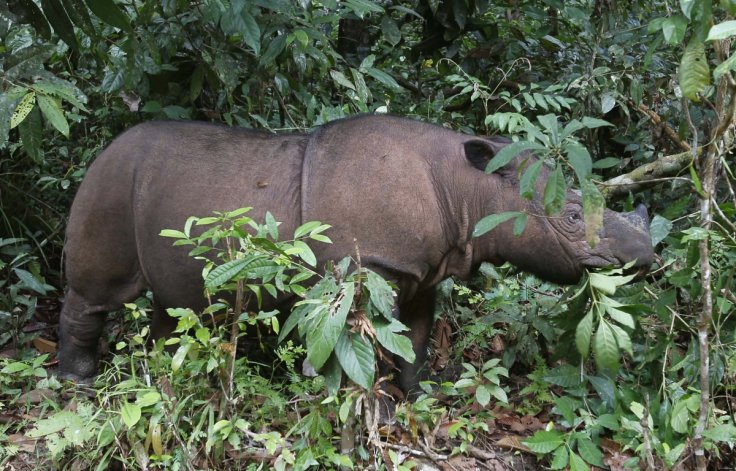
The Sumatran rhinoceros have been on the brink of extinction for several years and less than 100 individuals are left in the world. Now, scientists have analysed the sequence of their genome in a study and discovered that the rare rhino species has been close to dying out for many centuries.
Ipuh, a male rhino from the Cincinnati Zoo who died in 2013, provided the sample that was analysed as a whole. "Our genome sequence data revealed that the Pleistocene was a roller-coaster ride for Sumatran rhinoceros populations," says Herman Mays Jr., a genetics professor at Marshall University and author of the study.
The findings have stated that the Sumatran rhinos were hit badly by the climate change during the Pleistocene, which we know commonly as the Ice Age. After sequencing the whole genome of the species, scientists found out that only 700 Sumatran rhinos survived the Ice Age, which was about 9,000 years ago. "The population bottomed out and never showed signs of recovery," said Mays.
The study, published in Current Biology, stated that the rhino population was at its peak during the Pleistocene period, which was 2.6 million to 11,700 years ago. However, the end of that epoch marked the biggest decline in the population of this mammal. The reason was climate change in Southeast Asia's Sundaland, which contained their habitat.

As a result of ice melting rapidly, islands of Borneo, Java and Sumatra, as well as the Malay peninsula and mainland Asia, went below sea level, thereby isolating this species in a region fast filling up with water. "By the end of the Pleistocene, the Sundaland corridor was submerged, and populations were fragmented," says the study.
The World Wide Fund For Nature (WWF) has mentioned that there are fewer than 100 Sumatran rhinos in the world presently. The IUCN Red List also designates this species as "Critically Endangered". It has been said that man-made activities like deforestation and hunting have also contributed hugely to this dire situation.

In this research, scientists used Ipuh's genome sequence to map thousands of generations of demographic history of the species with a method known as pairwise sequentially Markovian coalescent (PSMC).
Sumatran rhinos have become extinct in Malaysia in 2015, with only two individuals – Tam and Iman – surviving as of now. This species can run at speeds up to 32 miles per hours and weight about two tons on an average.
Check out this video on the valuable species:









